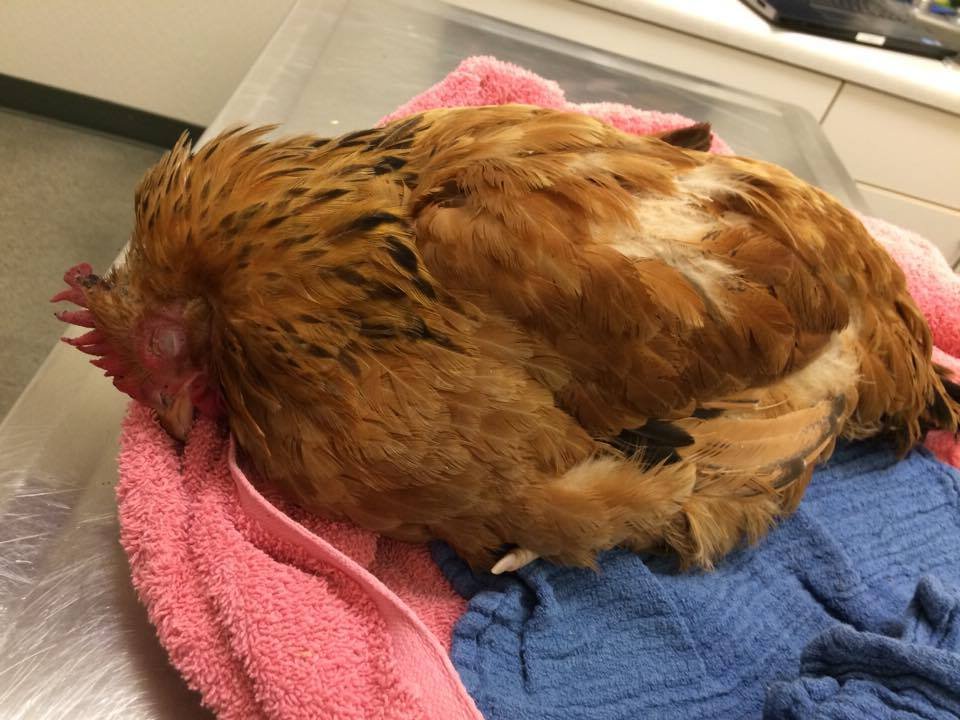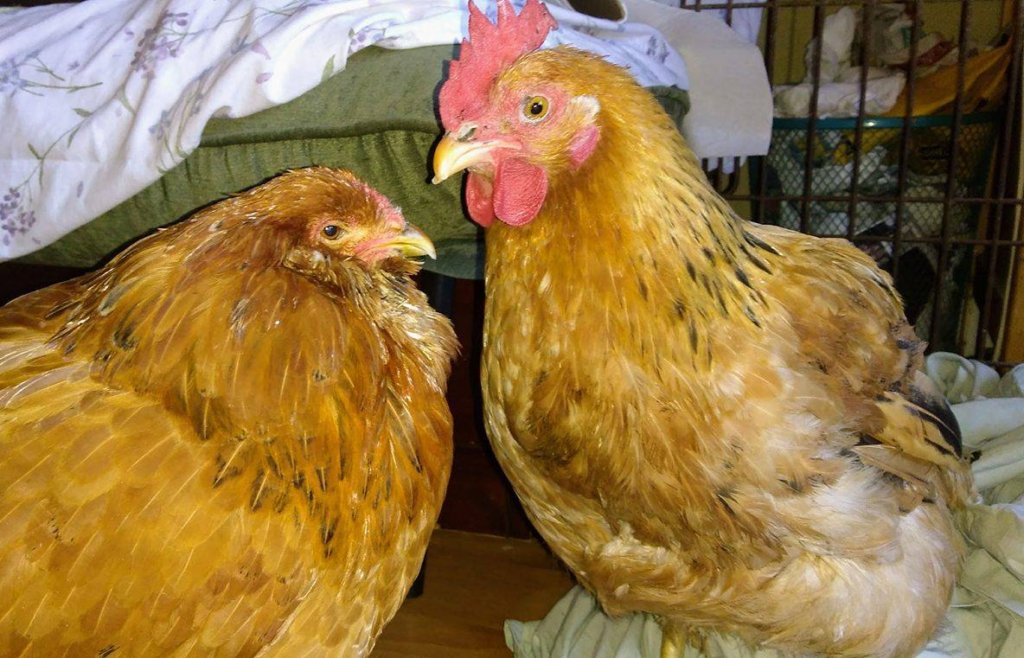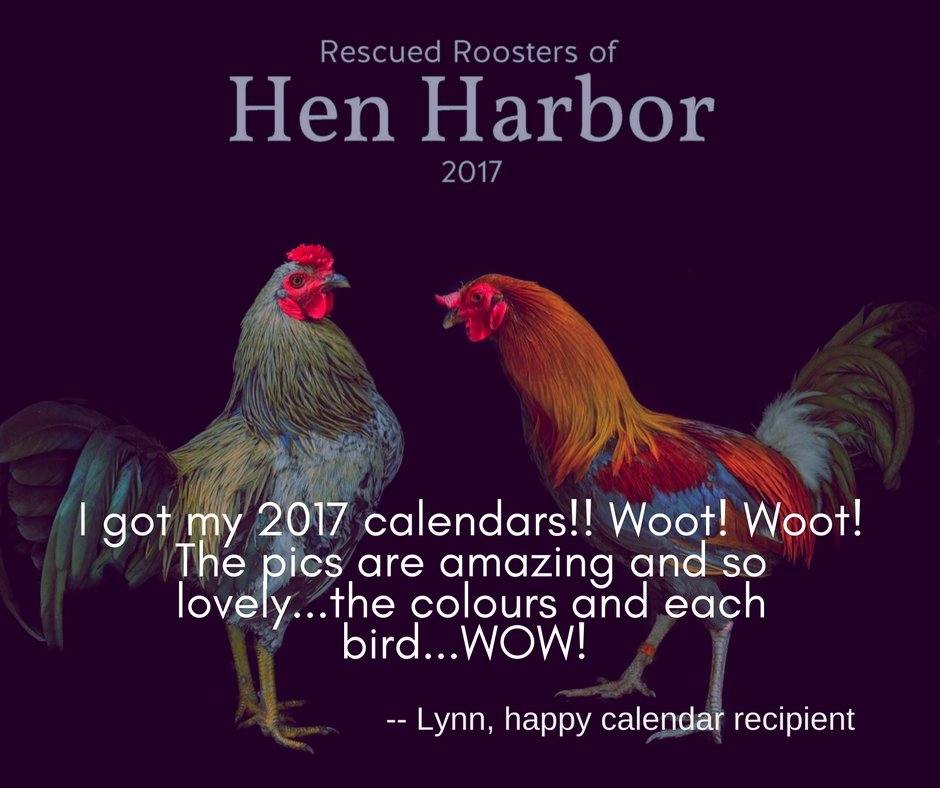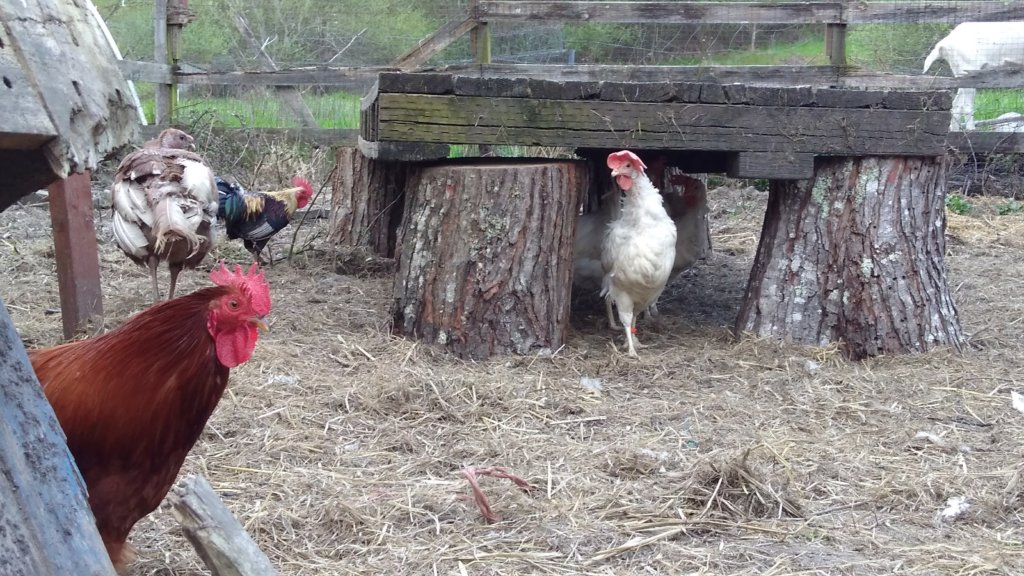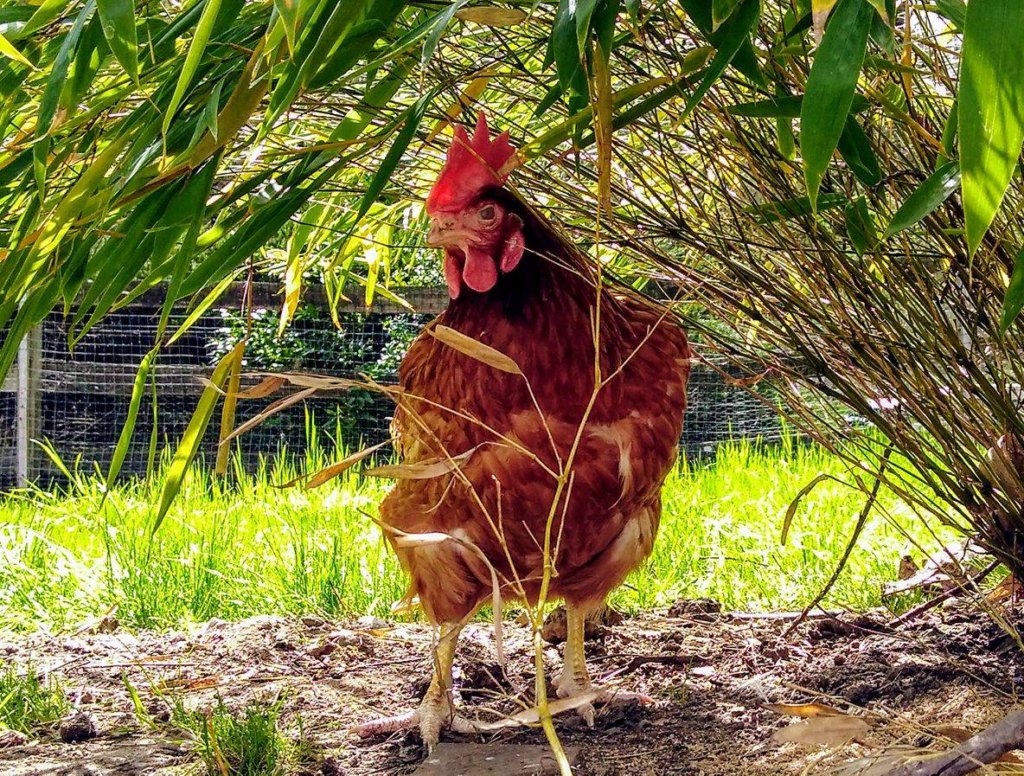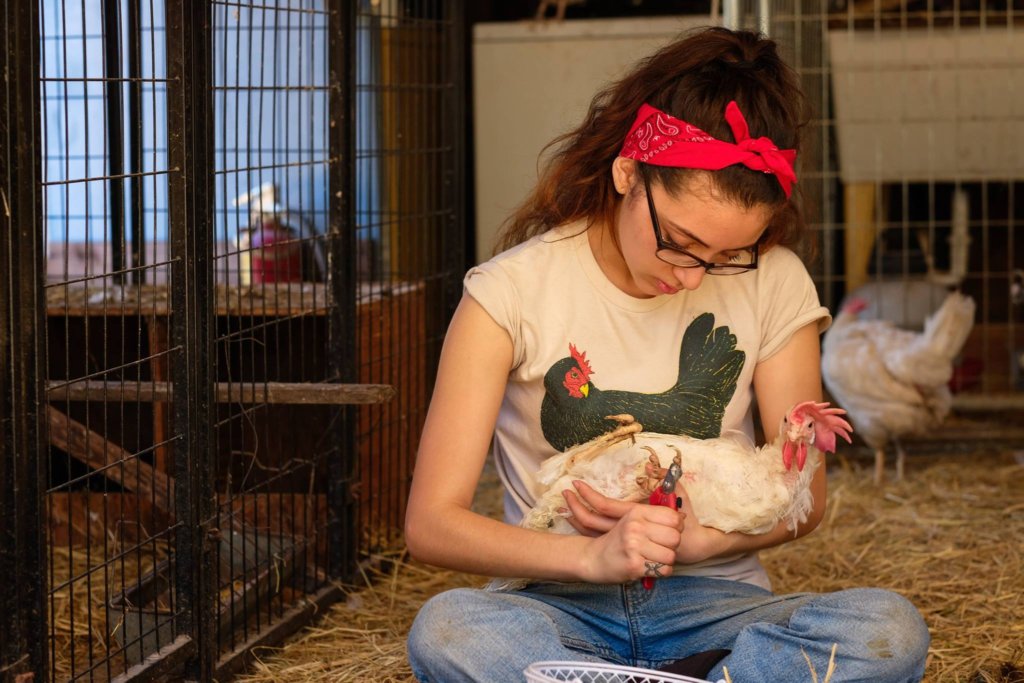By Ariana Huemer | Project Leader
Sparkle Duck is a hen with pumpkin-colored plumage who arrived at the sanctuary bedraggled and unable to do more than lift her head. She had been spotted by a student in a Future Farmers of America program (the second such hen in a year) lying on the floor of the coop, covered in her own waste, and unable to walk.
Per the program's protocol, Sparkle Duck was set to be “culled” (killed), but the student who found her begged the program’s director to let Sparkle Duck have a second chance at life.
“We’re all worried about her,” wrote the compassionate student. “But my teacher just told us she was going to die and laughed at us." With the optimism and fortitude of youth, the student managed to secure Sparkle Duck and ferry her four hours north to Hen Harbor.
Multiple vet visits and many diagnostic tests later, Sparkle Duck has gone from a virtually paralyzed, lice-ridden bag of feathers and bones to a vibrant, slightly visually- and mobility-impaired hen with a maniacal lust for grapes. As bits of her hectic past linger, Sparkle Duck heads to the vet again on Monday (the first day of spring and new life!) --along with Rumbler the turkey, Jumbo the ex-industrial laying hen with a fractured leg, and Cleo the grand, old senior hen.
For all these hens, a hormonal implant to shut down their ovaries -- thus stemming the inevitable tide of reproductive diseases that would otherwise kill them -- will be part of their healing routine. Spending $100 to implant one hen may sound a bit pricey, but the long-term payoffs of the investment are huge. Not only does it spare the sanctuary the financial burden of a $1200 surgery bill, but it spares the bird herself from the trauma of either invasive surgery or a painful, premature death via reproductive disease. And freeing a hen of the burden of egg-production allows her body to funnel energy into other tasks -- like healing.
“It’s a tiny playground for chickens!”
As important as meaningful veterinary care is to a bird’s well-being, equally so is secure and functional housing that defies the efforts of bobcats, hawks and coyotes. In the first three months of 2017 we invested significant time and (all-volunteer!) labor into shoring up holes in the fenceline and installing (long-overdue) aviary netting over more than 7,500 square feet of the birds’ enclosures.
When storms took out a huge tree on the property, volunteers crafted chicken jungle-gyms, perches, and climbing structures from branches and tree-trunk sections, particularly in the adoption yard, for birds awaiting transport to their new homes. “It’s like a tiny playground for chickens!” gushed a recent sanctuary visitor as she peered into the adoptive-hen yard.
Taking advantage of the recent historic rainfall in the area, we also strategically installed multiple, giant bamboo clumps throughout the yards to provide the chickens much-needed cover -- both from flying predators and from the impending heat of the midday summer sun. So far, the new foliage has been a hit, and each bamboo clump is never without its adornment of happy hens and their rooster guardians.
Looking ahead, volunteers are sketching out a new area for special-needs birds: blind hens, elderly birds, wimpy roosters, and mobility-impaired birds like Sparkle Duck, for whom the rigors of regular-chicken yard-life are too hectic.
It’s the Year of the Rooster!
Fiona, Gargantua, Forrest, Featherfoot, Autumn, and Orange Blossom are a cadre of roosters with a few things in common: All were discarded and left to die, simply for being born boys. All of them also grace the pages of Hen Harbor’s 2017 “Rescued Roosters” calendars -- the first effort of our new Rooster Outreach program. And what better time to raise public awareness about the plight of roosters than the Year of the Rooster?
Although proceeds from calendar sales went toward the ongoing care of sanctuary residents, the broader impact has been to nudge viewers toward a different perception of roosters -- one that sees them as interesting, complex companions rather than nuisances or unfortunate mistakes.
“What a wonderful way to raise consciousness about roosters,” remarked one calendar recipient.
“Friends have commented upon seeing the calendar that they had never really thought of roosters much … This beautiful calendar is a great way to start talking to people about the awfulness of the egg industry and even get them to take steps towards going vegan. Seeing the beauty and uniqueness of these birds touches their hearts.”
Links:
Project reports on GlobalGiving are posted directly to globalgiving.org by Project Leaders as they are completed, generally every 3-4 months. To protect the integrity of these documents, GlobalGiving does not alter them; therefore you may find some language or formatting issues.
If you donate to this project or have donated to this project, you can receive an email when this project posts a report. You can also subscribe for reports without donating.
